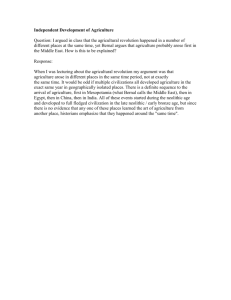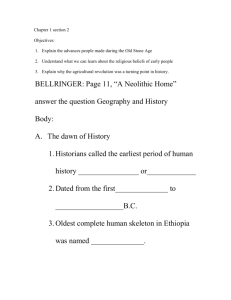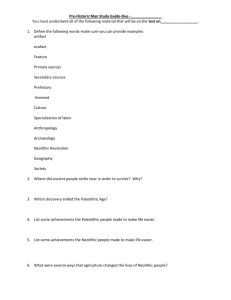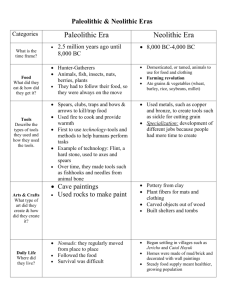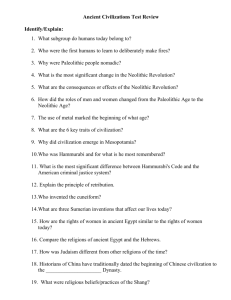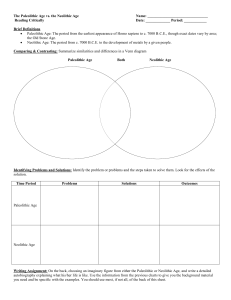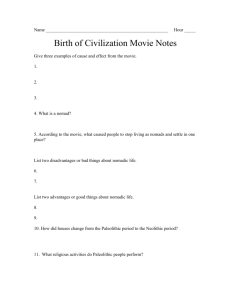Lecture
advertisement
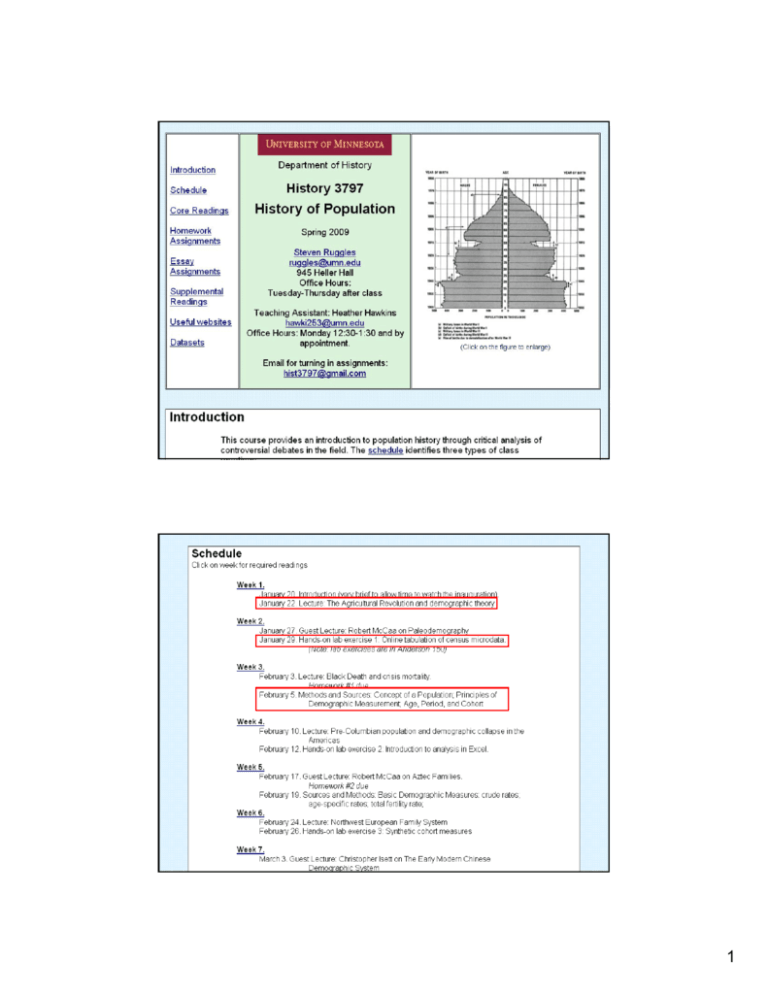
1 2 Lecture Outline 1. 2. 3. 4. Introduction Reproductive strategies of organisms and the Balancing Equation Paleolithic developments Agricultural Revolution and Neolithic population Black Death 3 6000 World Population, 1000-2000 Population (millions) 5000 4000 3000 2000 1000 0 1000 1200 1400 1600 1800 2000 Year Lecture Outline 1. 2. 3. 4. Introduction Reproductive strategies of organisms and the Balancing Equation Paleolithic developments Agricultural Revolution and Neolithic population 4 5 Balancing Equation Assuming closed population (like the world): ∆P = B – D With migration: ∆P = B – D + I – O ∆P = change in population B = Births D = Deaths I = In-migrants O = Out-migrants 6 Lecture Outline 1. 2. 3. 4. Introduction Reproductive strategies of organisms and the Balancing Equation Paleolithic developments Agricultural Revolution and Neolithic population Population take-off: 1500AD-2000AD 7 Population take-off: 6000BCE-1AD 8 9 10 Handaxe, Algeria, ca. 700,000 BP Neanderthal tools, ca. 250,000 BP 11 Upper Acheulean handaxes from Kalambo Falls, 180,000 BP 12 13 14 Lecture Outline 1. 2. 3. 4. Introduction Reproductive strategies of organisms and the Balancing Equation Paleolithic developments Agricultural Revolution and Neolithic population 15 Emmer Wild Barley 16 Einkorn wheat 17 Neolithic grind stone for processing grain 18 Domesticated Squash seed from Oaxaca, Mexico, ca. 10,000 BP 19 20 Main theories to explain simultaneous development of agriculture around the world • The big animals were exterminated by overhunting. • Global warming at the end of the last ice age stimulated development everywhere. • Agriculture and economic development were inevitable developments, once human culture had been set in motion The agricultural revolution was driven by population pressure • 21 Mark Cohen’s interpretation: Agriculture resulted from population pressure Jared Diamond in New Guinea 22 Botswana Bushmen Akie, East Africa savannah Penan, Borneo forest 23 Matis in the Amazon Shoshone, ca. 1900 24 Jared Diamond in New Guinea Two opposing theories of Neolithic demography • Classic theory: – Improved food supply, reduced predatory threat, reduced mortality, so deaths declined and population grew. • New Theory: – Decline in food quality, increase in potential for crop failure, increase in transmission of disease increased mortality, so deaths increased. – Reduced birth intervals and decline in the cost of childrearing led to an increase in births, more than compensating for the increase in deaths. 25 Some Unanswered Questions • Why did agriculture emerge at several places around the world at almost the same time? • Did agriculture stimulate the Neolithic take-off in population growth, or did the population growth stimulate the adoption of agriculture? Or was it a little bit of both? • Did the introduction of agriculture lead to a worsening or improvement of human health and nutrition? 26
